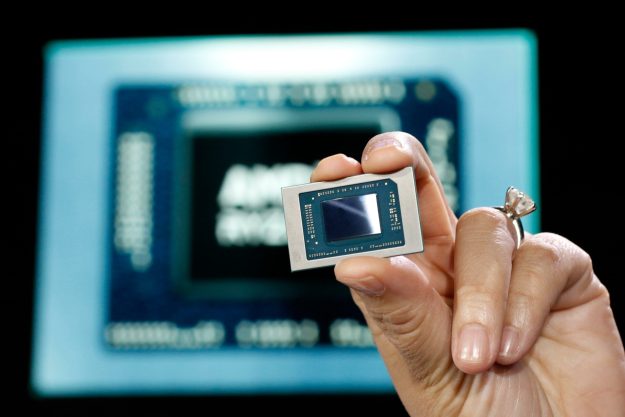
Created by Ka Kei Suen, Charlotte Furet, George Wright, and Andre McQueen from London’s Royal College of Art, Skinterface is essentially a skinsuit covered with a matrix of small nodes (actuators) that use sound to move tiny magnets underneath those nodes. When each node is fed a specific sound, the node will send out a waveform that vibrates the magnet. Different waveforms will generate different vibrations.
“Each moving magnet node is independent, and has several modes of operation,” the team states in a video. “Complex waveforms can be fed into the output of these actuators while the direction of the movement can be separately controlled and varied, allowing for acute control of touch intensity, form, temperature, and sensation.”
In a separate report by Quartz, each node on the Skinterface suit is color-coded, allowing a 3D camera to track its movements. As the user moves through the virtual space, the suit will generate different sensations that can be felt across the body. The team’s next step with Skinterface is to allow users to “feel” virtual objects in their hands.
The main idea behind Skinterface is that skin is the human’s interface to the physical world, allowing us to feel the hardness of keyboard keycaps, the breeze of an overhead fan, the softness of a chair’s cushion, and so on. As a result, skin should also be the main interface in the digital world as well. Otherwise, humans are mere observers looking through a virtual window strapped to their face.
The team recently showcased its Skinterface design at the Milan Design Week 2016 showcase back in April. The developers also revealed a glove that provided sensations to the hand and forearm when passed through a special window frame, as if the user was moving their hand through a portal into another, unseen world.
In addition to the glove, the exhibit included a device that featured two platforms: one on the right with embedded sensors that visitors placed their hand upon, and one on the left sporting an artificial hand with its palm facing up. When visitors touched the fake hand on the left, those with their hand placed on the platform to the right could feel those sensations.
“The focus in this exhibit is primarily on the physical transition into the virtual world, the feeling of crossing an imaginary threshold into a computer simulated environment,” the team states. “Beyond this transition, the suit would also be capable of facilitating two-way interactions with virtual objects or people — be that for entertainment, communication, virtual prototyping or one of the many other potential applications.”
Touch is just one of the main goals involved in moving virtual reality forward. Emteq is currently working on technology to bring emotional interactions to virtual reality, deeming this input as the fourth-generation of VR, following the initial headset availability, hand-movement tracking, and eye tracking. And another company is working on Veeso, a VR headset sporting face-tracking technology.


